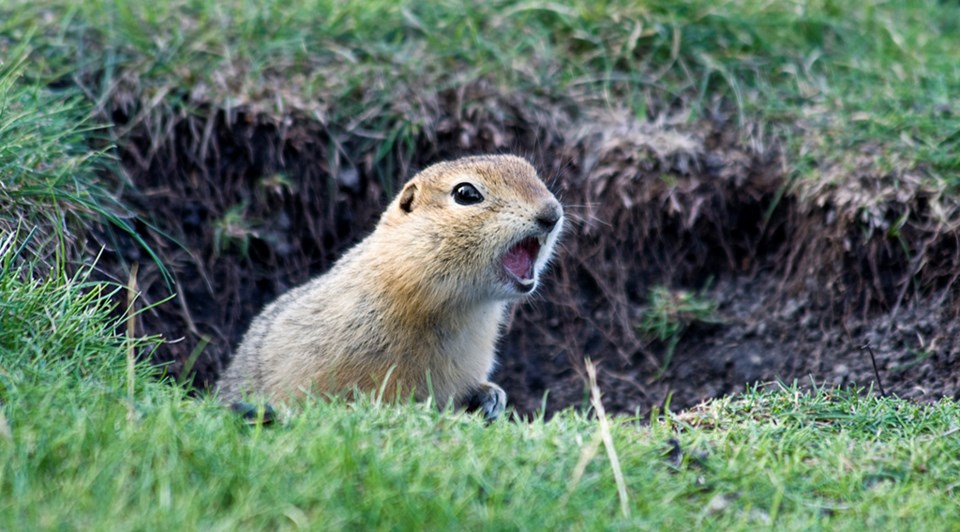WEST-CENTRAL SASKATCHEWAN CROP REGION — The majority of seeding has been completed in the West-Central Crop Region with some of the last fields being seeded to green feed this past week. While it was highly localized, rain was finally received across many parts of the region, this was desperately needed to improve growing conditions.
The area north of Rosetown was hit with a rainstorm late in the week which resulted in more than approximately 127 mm of rain over the course of only a few hours. Flooding was severe but producers were still happy to see it rain and will assess the damage once the water soaks in. Other parts of the region that received rain were the Biggar area with 69 mm, the Dinsmore area 65 mm, the Eston area 45 mm and the Marengo and Kindersley areas 30 mm. While these areas got rain, many areas did not and conditions remain extremely dry.
Even with the recent rains that dotted the region, the moisture conditions in the west-central region continue to be less than ideal for plant growth. Cropland topsoil moisture is rated as 52 per cent adequate, 29 per cent short and 19 per cent very short. Hay and pasture land topsoil moisture is rated as 42 per cent adequate, 40 per cent short and 18 per cent very short.
Regionally, 53 per cent of the fall cereals, 54 per cent of the spring cereals, 47 per cent of the oilseed crops and 60 per cent of the pulse crops are at their normal stages of development for this time of year.
Crop conditions range from very poor to good in the region, with 36 per cent of the durum, 39 per cent of the canola and 41 per cent of the lentils in good condition at this time.
Rain in the past week in the region will hopefully improve crop, hay and pasture land growth. Later seeded crops have still not germinated and emerged where soil moisture is extremely lacking. Many livestock producers are worried about how much of a hay crop they will have.
The majority of crop damage this week was due to flooding, hail, wind and insect pests (flea beetle, grasshoppers and cutworms.) One of the hailstorms resulted in 101 mm of pea sized hail that covered an area roughly two miles wide by two and a half miles long, reseeding may be required in this area.
Provincial Overview
Producers were able to wrap up most of the seeding operations in the province over the past week with 98 per cent of the crop now in the ground. There is still some seeding to be done in the east half of the province, where small portions of fields were too wet to seed. With recent rain in the region, these areas will likely go unseeded this season.
Multiple rain showers and thunderstorms hit the province over the past week. Several areas reported minor to severe flooding. While the rainfall caused damage in some areas, it was still very welcome to those who were desperately in need of moisture. In the west, the rain will hopefully allow crops to recover from the drought conditions, but due to the localized nature of the rainfall, much of the western regions will need more widespread rains soon to keep crops from failing. Some areas received hail over the past week, damage is currently unknown since many crops have not yet emerged, but enough hail was received in some areas to make it appear as if it had snowed.
The most rain was received north of Rosetown, in RM 317, where over 125 mm was recorded Monday night; the area experienced some flooding but most of the water was able to soak in. The Biggar area received 69 mm, the Dinsmore area 65 mm, the Bienfait and Rhein areas 41 mm, the Duck Lake area 34 mm and the Tyner and Bruno areas 25 mm. Many other areas received rain this past week.
With the rainstorms came the wind, which delayed many producers from being able to spray for weeds and insects such as flea beetles, cutworms and grasshoppers.
Provincially, topsoil moisture conditions have improved compared to the previous week. Cropland topsoil moisture is rated seven per cent surplus, 65 per cent adequate, 19 per cent short and nine per cent very short. Hay and pasture land is rated as six per cent surplus, 61 per cent adequate, 24 per cent short and nine per cent very short. For some hay fields in drier areas, the rain might have come too late and the hay crop may not be ready for first cut in a couple of weeks. In areas where moisture was abundant, the crops look very good.
Provincially, 69 per cent of fall cereals, 60 per cent of pulse crops, 50 per cent of spring cereals and 41 per cent of oilseed crops are at their normal stages of development for this time of year.
Crop conditions across the province mostly range from fair to good. With the recent rains, producers are hopeful that conditions will improve, especially in the west. Most damage this week was from drought, flooding, insects (flea beetles, grasshoppers and cutworms), gophers, hail and wind. Producers have wrapped up some of their reseeding operations and are now turning their focus back to spraying to keep pests under control.





